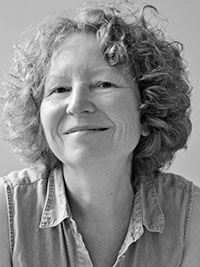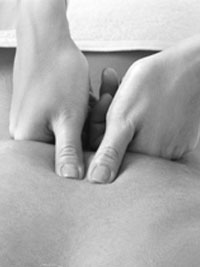Shiatsu
Shiatsu evolved from traditional Japanese massage, or “Anma” in the early years of the 20th Century. It distinguished itself from other manual therapies of the time by integrating traditional eastern theory with western anatomy and physiology. Today, it is a recognized and regulated form of therapy in Japan.
A shiatsu therapist applies firm pressure that is appropriate for the needs of each client, often incorporating stretches that release tension in the joints. Many shiatsu therapists understand that underlying all of the functions of the body are the channels of energy flow commonly known as meridians. Balancing the excesses and deficiencies of the energy, or “qi” flow encourages homeostatic mechanisms to assist in the self regulation of the body and mind. This fundamental aspect of the treatment is undertaken after a careful assessment of the patterns of qi flow in the body by way of the four traditional methods: observation, asking, listening, palpation.
A shiatsu treatment typically treats the whole body as well as symptomatic areas, making it a holistic form of energetic bodywork.
Click here to read more about shiatsu therapy.
Shin So Shiatsu is a further evolution of meridian based shiatsu that delves more deeply into the system’s energy matrix. Developed by Master Tetsuro Saito, Canada’s “Father of Shiatsu” Shin So Shiatsu explores the deeper systems of energy in the body by way of a precise and subtle diagnostic approach. Over more than 40 years of study and experience of shiatsu and ongoing developments in Japanese acupuncture, Saito has made it possible for shiatsu therapists to work with a wider range of conditions with greater success.
Click here for an article about Shin So Shiatsu.
FAQ
What should I expect during my first treatment?
You will receive your treatment on a futon on the floor or a massage table, depending on the therapist. Wear loose comfortable clothing for comfort, as stretches are usually part of a treatment. Arrive a few minutes early to fill out the history form. The treatment will begin with a review of the information provided and a discussion of your heath status and concerns. Your treatment generally consists of comfortable pressure using hand and thumbs and sometimes elbows to release tension and relieve pain by enabling a freer flow of qi. Your therapist will adjust the pressure according to the feedback they receive from your body and energy system. Stretches are usually included to help mobilize joints and improve flexibility.
At the end of the treatment, our clients report feeling more relaxed and lighter, and experience less pain. It is a good idea to relax and avoid strenuous activities. Changes can be noted for 24 to 48 hours following a treatment. We advise you to drink more water, as toxins and lactic acid can be released from the tissues and water helps to flush them through your system, avoiding discomfort.
Is shiatsu covered by my extended healthcare plan?
Registered Shiatsu Therapists (RSTs) are covered by some Green Shield plans, and other companies have coverage as well, so it is best to check with your provider.
Should I receive shiatsu if I’m pregnant?
Yes. Shiatsu can be helpful for normal symptoms of pregnancy, and to help regulate qi and body functions in preparation for delivery. Postpartum, treatments help to restore balance and improve energy.
I don’t have any problems. Can I benefit from treatments?
Yes. You don’t have to feel bad to feel better. Since shiatsu improves circulation and nervous system function, so everyone can benefit. You may experience a sense of well being, more emotional balance and better sleep. Touch is essential for healing mind and body, as many studies have shown.
Shiatsu Practitioners

Ted Thomas
RST, R.Ac
Book with Ted

Marta Karela
RST, Certified Reflexologist
Book with Marta

Saul Rosenbaum
RST
For information or appointments, call
604-700-7386.
